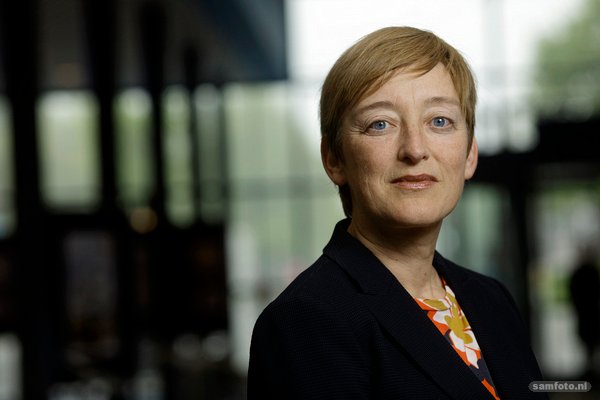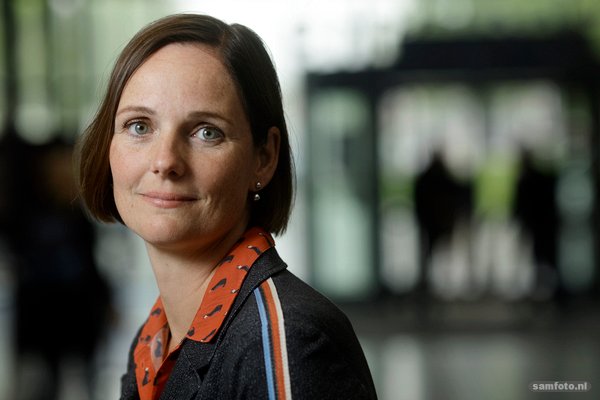‘The material side of design is at risk of disappearing’
The Faculty of Industrial Design Engineering, which is celebrating its 50th anniversary this year, has two new ‘home-grown’ female professors. Prof. Conny Bakker and Prof. Ruth Mugge both focus on the concept of much-needed sustainability in design.
The Faculty is proud of the fact that, for the very first time, two professors have been appointed who have completed their entire university education at IDE. What does that mean to you?
Conny Bakker: “We’re proud, too.”
Ruth Mugge: “Industrial Design Engineering is multidisciplinary, which is why there are a lot of professors here from other disciplines. It’s good that you can offer your own students that chance too. And we are role models for female students.”
Do you see yourself as role models?
Bakker: “Absolutely! We now have slightly more female students than male students. That would usually be reflected in the academic staff body. Now we have a chance to balance that out a bit. Women also need to be able to see that a career in academia – not just in the professional world – is also an option.”
Did you miss having role models when you were students?
Bakker: “I started in 1983 and graduated in 1989, and we had one female professor: Gerda Smets, for design. That was unusual at the time, but I didn't think about it much. Gerda Smets was actually Belgian. It's interesting that the first wave of female professors here came from abroad.”
Mugge: “I started in 1995 and graduated in 2001. The name Gerda Smets rings a bell, but I don’t think she taught me. I think I did miss having a role model, yes. It’s much harder for women to break through the glass ceiling.”
And now the Faculty sees you as guides on its path towards sustainable design. What can you tell us about your specific field of research?
Bakker: "My research focuses on design methods for sustainable design. Since 1992, the world has become more complex and the environmental problem more urgent. For example, how can you assess the environmental impact of a smartphone? There’s a whole infrastructure behind it, from satellites to data centres and mobile Wi-Fi networks. Blockchain and the internet of things are making things even more complex. Technologies can help to make product flows and systems more sustainable, but they also have a huge footprint. Is using those technologies worth it, then? We don't have answers to that question yet.”
Mugge: “I focus on consumer behaviour, from a sustainable perspective. What do consumers think about certain products and how do they behave? How can you ensure that consumers welcome circular products, such as refurbished phones? When it comes to antiques, people love the fact that they are old. We look at the perception, the product and how people behave when they have a product. How can you convince them to keep their phones longer? How can you help the designer influence sustainable consumer behaviour?”
How can you do that?
Mugge: “By adding a story to a product. One of our graduates developed a lamp that was painted entirely black. The idea was to scratch your child’s height in it as it grew. Each year you could use the lamp to see how much your child had grown. The lamp then becomes special, unique and irreplaceable. Then you’re more likely to repair it than throw it away. You can achieve that through the design.”
What message did you want to share with the audience at your joint inaugural address on 10 May?
Bakker: “I outlined six changes to visions I’ve identified in the field over the last few decades. I wanted to explain how they will affect the development of methods.”
What changes are those?
Bakker: “One is called limits. It was thought that producing more efficiently would lead to both economic growth and environmental benefits. We now know that’s not possible. So we need to think about limits to growth and about alternative forms of growth and what that means for your methods. I called the second one radical change. For a long time, it was believed that we could only achieve major changes by taking small steps. In many cases this is true, but it's time we thought about more radical changes that are desperately needed due to the urgency of the situation. I want to show thaat designers have a part to play in presenting radical but exciting visions of the future.
A third change is called confronting consumption, which touches on Ruth’s work. There has long been a tendency to pass the environmental problem on to individual consumers, although they are often trapped inside a system. For example, after creating a cheap-flight infrastructure we tell them ‘you have to fly less’. If we don’t tackle these infrastructures, it will be very difficult for individuals to change their behaviour.
I also wanted to talk about circular design. We need to think about what happens to a product when it is no longer used. How to give it a second or third life. You have to make strategic decisions about this from day one.
I also talked about time in design. I am all for extending the design process. Designers should monitor products over time rather than say goodbye to them once they’re off the drawing board.
The last change is that, with the rise of the internet of things and blockchain, the world is dematerialising. A classic example is that no one has an answering machine anymore. A smartphone is essentially the equivalent of a room full of computers. The material side of the design is at risk of disappearing. That’s reflected in the current overhaul of the Bachelor’s degree programme.”
‘How can you help the designer influence sustainable consumer behaviour?’
During the inauguration address, Ruth Mugge focused on 'sustainable consumer behaviour’. That sounds like a contradiction in terms.
Mugge: “As soon as you start consuming, materials and energy are always involved, but you can design the product in such a way that you need as little as possible. Using materials optimally, giving the product three lives and then recycling it, will move us towards sustainable consumption.
I focus on different types of consumer behaviour. One example is choosing alternatives. You can also use plastic from the ocean to make packaging for detergent. It's black, whereas transparent packaging just feels cleaner. So you have to change that perception through the design.
There are also alternative ways of consumption, such as paying per wash: get a washing machine for free and then pay per wash – cold washes are even cheaper. This is how you can encourage people to change behaviour. To do that, you need to offer people extra benefits while making it easier for them.” <<

